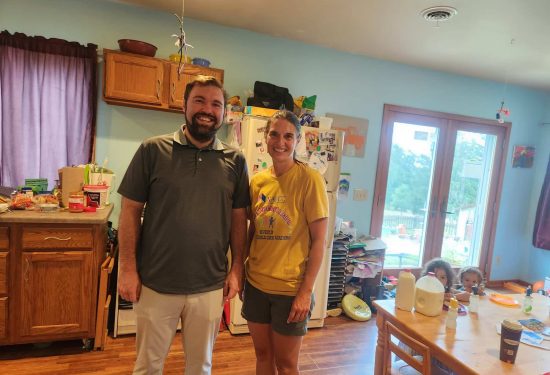The $5.9 billion child care subsidy program, also known as the Child Care and Development Block Grant, is our country’s primary government child care support for working families – and it is broken. Only 12% of eligible children access this crucial funding.1 Contrary to popular belief, this is not merely a budget issue. 37 states have no waitlists for the program, which means funds are still available.2
Subsidy access is especially challenging in home-based settings. Between 12 and 21% of paid home-based child care providers participate in the subsidy program.3 A large portion of the remaining 79% of paid home-based providers quite likely serve subsidy-eligible families and are therefore missing out on crucial financial support. This is not simply a licensing barrier. In 41 states, license-exempt providers can access the subsidy.4
The problem
If funding is available for a desperately needed service, why is it left untouched? The answer, far too often, is the process. Providers must navigate time-consuming paperwork to accept subsidy funding. As a result, many choose not to open subsidy spots, or limit the number they offer, making it harder for low-income parents to find child care.
Gina Kozak, a home-based provider in Nebraska, summarized this challenge: “The reason [providers don’t accept subsidy] is because of the paperwork. Everyone complains. Our jobs would be so much easier if it was just us and the kids and we had no paperwork.”
How subsidy works
The subsidy is a federal program administered by states, territories and tribes. The program directly pays providers who serve qualified low-income families while they work or go to school. It offers affordable care to families at the setting of their choice and a steady source of income for providers – though often below market rate.
Subsidy challenges
Every month, providers go through a tedious process to get paid for care they have already delivered to families who are already approved. Most states require providers to collate detailed records of each child’s attendance, sometimes down to 15 minute increments. Centers have staff for this work, but home-based providers, who typically care for kids 56 hours a week, handle it themselves during precious nights and weekends. Most cobble together their own processes, using paper sign-in sheets and post-its.
Providers fear making a mistake that could lead to an audit or financial penalty. The rules are so complex that many do not know how much funding to expect in a given month. Ashli Carlock, a home-based provider in Nebraska said: “[It’s] nerve wracking. You know you’re going to get [paid] something, but you don’t know what that will be exactly… You’re trying to calculate in your mind paying bills, keeping food stocked for kids, meeting your own personal needs, and paying a part-time employee.”
Action Items
Whatever your role, you can take action now to unlock this funding for providers and families.
Home based child care providers
If you’re a provider, consider accepting subsidy. This can help fill open spots and offers a steady source of income that is often more reliable than private payments. It also ensures that families in your community that seek and value home-based care, can access it. If you’re part of a network, ask for help in checking your local rates and getting enrolled.
Family child care networks and provider-support organizations
If you offer support to home-based child care providers, you have many options for easing this burden.
1) Subsidy management software
Pie for Providers (the organization I lead) and the Nebraska Early Childhood Collaborative are piloting a new way to support providers in navigating the subsidy. We offer simple, user friendly software that gets providers more funding and more predictable revenue and does the paperwork for them.
Providers report that the software helps them get every dollar they are owed, reduces their stress, saves them time, and makes them more open to accepting subsidy families. As one provider summarized, “I love to have everything in one place. Less paperwork on the business side is always welcome!! Thank you!”
2) Centralize subsidy administration
We invite you to think big. Could you get all network members approved by the state? Centralize monthly billing in your office? Services like these could help recruit providers from underserved communities to your network. Our software makes it easier for you to add this support.
3) Resources
Prepare your team to be a source of trusted information about the subsidy program. We frequently get questions on all aspects of the subsidy, and host well attended webinars, because providers have few other ways to get this information.
Government agencies
We support policy change to increase payment and improve access. There are also crucial process changes you can implement today:
1) Human-centered design and technology
Improve your processes using best practices that center the experiences of families and providers. Consult with experts to audit your current processes, as well as your provider and family-facing technology systems. Put yourself in the shoes of those who experience these systems, and think through how you can make them as friendly and accessible as possible.
2) Intermediaries.
Allow networks and other provider-support organizations to accept subsidy for groups of providers. Start by piloting this with a trusted partner using a waiver or other administrative tool.
3) Awareness
Simplify your communication and focus on disseminating clear information, especially when rules change. Many states have used COVID funding to expand eligibility, and many families and providers are still unaware of these changes.
Conclusion
The challenges of the subsidy program are significant, but the good news is we need not wait for sweeping policy changes to unlock this funding for the providers and families who need it today.
1. https://www.ffyf.org/abcs-of-federal-early-learning-and-care-funding-streams/. The program also supports parents in certain job training and educational programs. 2. https://nwlc.org/wp-content/uploads/2021/05/NWLC-State-Child-Care-Assistance-Policies-2020.pdf 3. 12% source (calculated from data): https://www.acf.hhs.gov/occ/fact-sheet/characteristics-families-served-child-care-and-development-fund-ccdf-based 21% source: https://www.acf.hhs.gov/sites/default/files/documents/opre/NSECE-chartbook-homebased-may-2021.pdf 4. https://www.acf.hhs.gov/sites/default/files/documents/opre/state-2019-ccdf-policies-dec-2020.pdf https://www.urban.org/urban-wire/expanding-subsidies-home-based-child-care-providers-could-aid-postpandemic-economic-recovery




